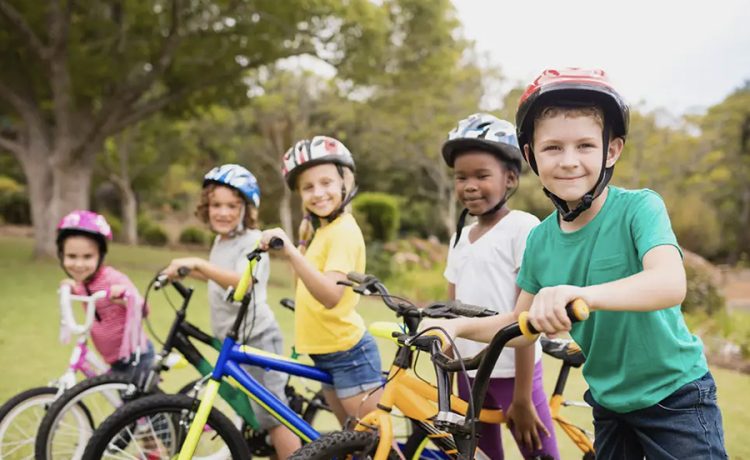Once your child has mastered bike handling basics, exploring trails and nature paths often becomes the next adventure. Trail riding builds confidence and skills in more varied terrain. But riding shared-use paths also requires learning cycling etiquette and safety. Teach your kids trail manners to avoid conflicts, collisions and injuries.
Classifying Trail Users
Shared trails accommodate different users – more than just cyclists. Understanding the main categories helps explain appropriate behavior:
- Bicyclists: Road, hybrid, or mountain bikes ridden at various speeds.
- Pedestrians: Walkers, hikers, runners, and those assisting the disabled.
- Equestrians: Those riding horses or other large animals.
- Other wheeled users: Skaters, skateboarders, wheelchair riders, etc.
Right-of-way often relates to the user’s vulnerability and ability to stop. Bikes yield to pedestrians, horses, and mobility devices. But differences in speed, visibility, and predictability among users require care by all parties. Teach kids to show courtesy toward every trail user.
Matching Speed to Conditions
Trail riding requires adjusting speed constantly in response to conditions. Children must learn to:
- Slow on crowded or narrow segments of trail.
- Brake before corners with poor visibility.
- Walk bikes down extremely steep or technical sections.
- Allow unsafe conditions like mud or ice to thaw before riding.
- Stop completely when wildlife crosses the path.
Ride at a reasonable speed that allows reacting and stopping. Higher speed colliding with a pedestrian or horse could cause severe injuries. Kids also need the strength and skills to control lightweight kids bikes at faster speeds. The good folk over at Woom recommend having them demonstrate control before allowing speed.
Announcing Your Presence
Cyclists should audibly announce their presence to avoid startling fellow trail users. Teach kids to:
- Ring a bike bell or horn well before overtaking others.
- Gently call “On your left!” when approaching from behind.
- Say “Thank you!” when others step aside or yield.
- Warn “Passing on your left” when riding past another cyclist.
This allows others to hear and react without being startled. It also conveys respect for their presence. Insist kids ask before petting horses to avoid being kicked or bitten by a frightened animal.
Passing with Care
Passing other trail users requires care and coordination:
- Pass on the left whenever possible.
- Check for reaction to an overtaking announcement.
- Only pass when signaled by the other user that it’s okay.
- Pass slowly, allowing wide clearance.
- Never pass close enough to touch the other person or animal.
- Use care when passing small children who can be unpredictable.
- For horses, stop pedaling and coast slowly when passing to avoid startling them.
Safe, polite passing prevents collisions and minimizes anxiety for others on the trail. Kids should understand some users may not be able to move aside easily. Passing may need to wait or require dismounting and walking bikes past.
Sharing the Trail Together
Above all, teach kids that trails are shared spaces. No single user is more important than others. Taking turns, being patient and sharing space shows respect. Form good habits when encountering others:
- Move off the trail when stopping to allow others to pass.
- Keep right and ride single file when cyclists come from opposite directions.
- Compromise on right-of-way if it’s unclear – err toward caution.
- Offer a smile and thanks as users cooperate at crossings and intersections.
Model polite interactions as you ride together. Thank kids for attentive riding and point out courteous cyclists you encounter. Make trail time an opportunity to reinforce caring, patience and community.
Conclusion
With age-appropriate guidance, kids can learn trail etiquette that makes the experience enjoyable for all. Cycling skills allow them to handle bikes responsibly in variable conditions. Etiquette skills empower kids to be considerate trail ambassadors shaping an inclusive outdoors.













